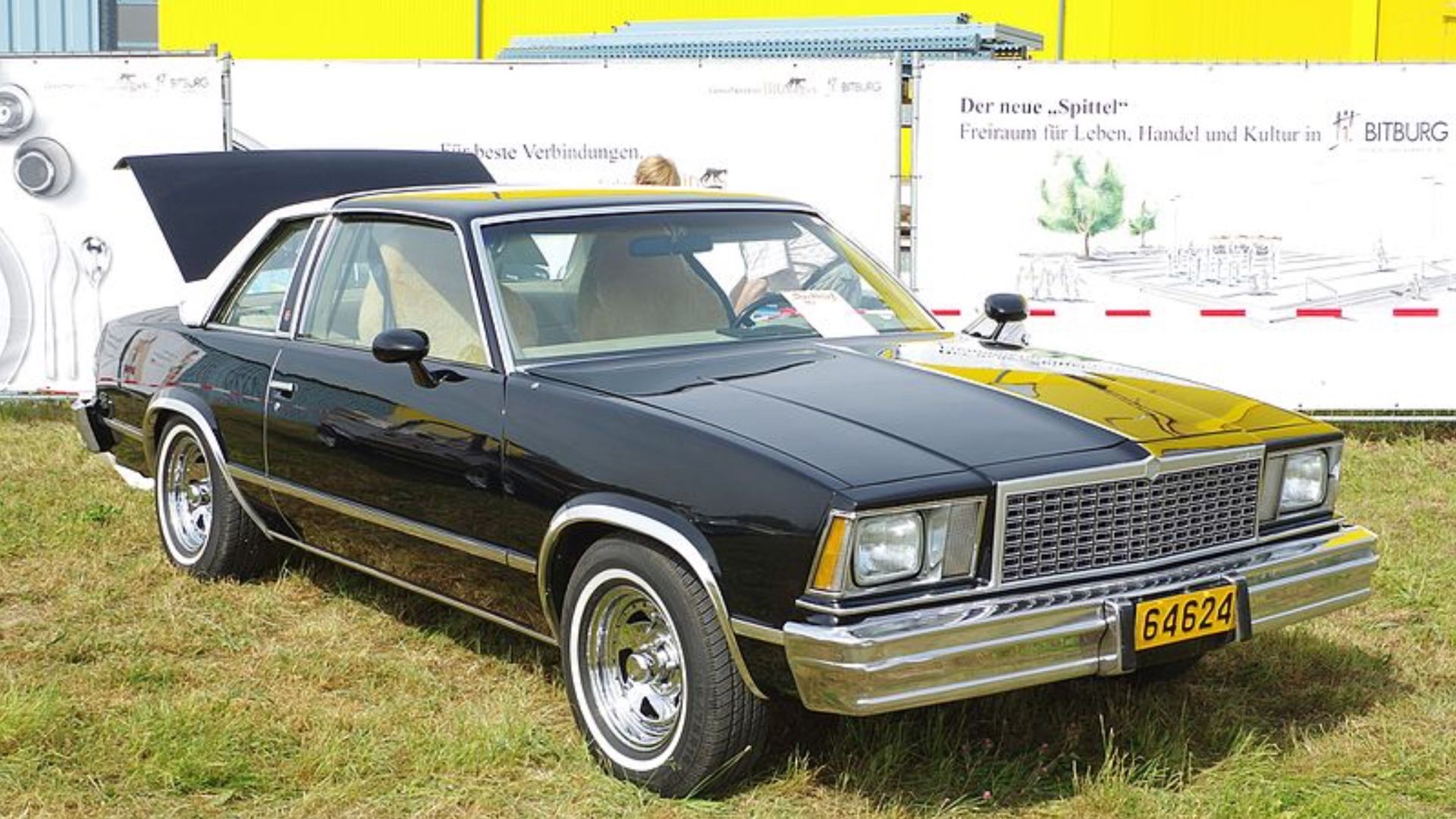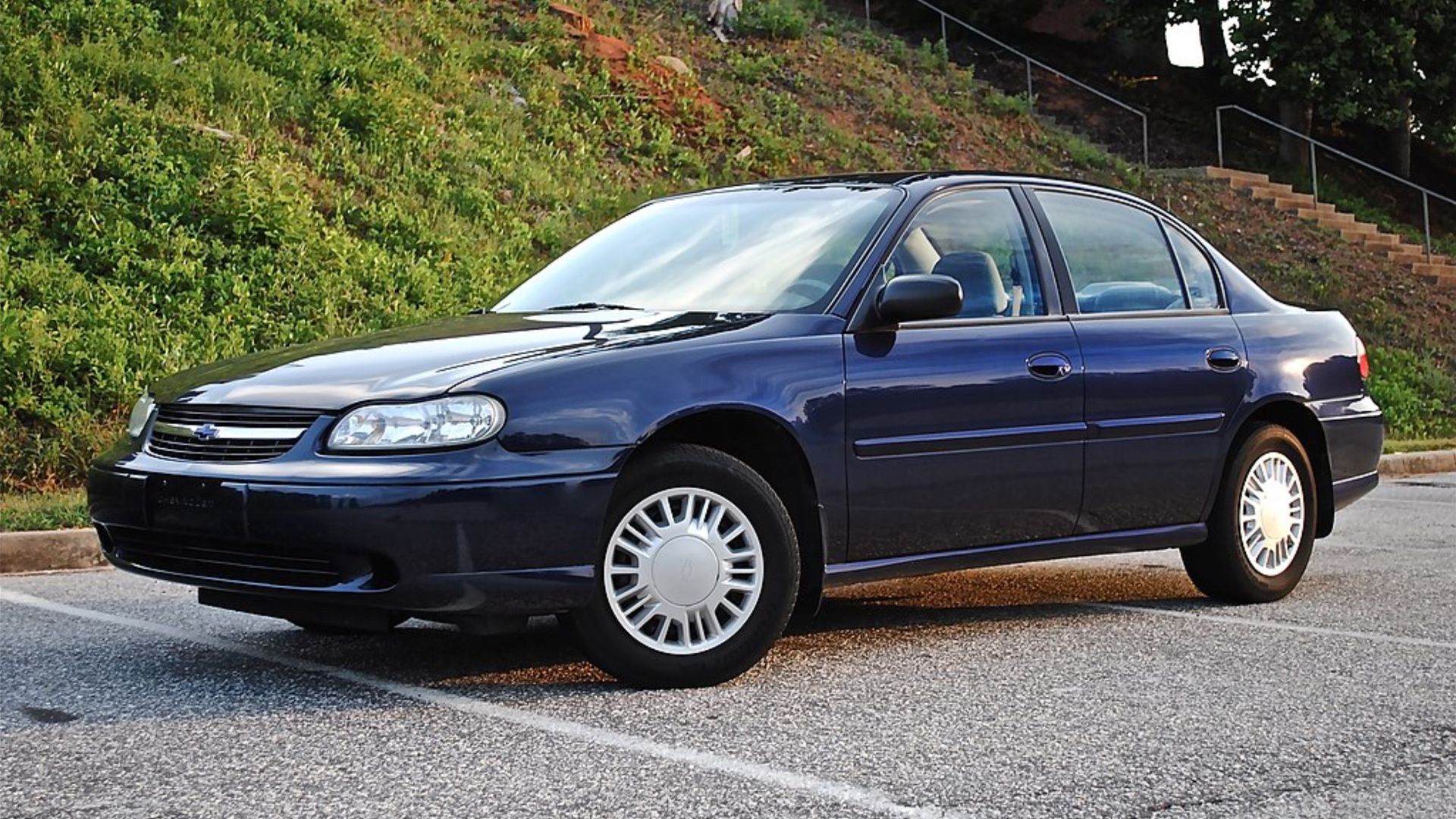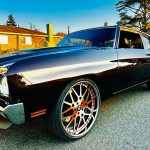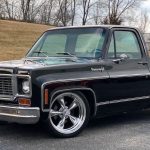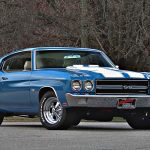As one of Chevrolet’s most successful nameplates, the Chevelle was incredibly versitile. The platform could be configured in two-door, four-door, convertible, station wagon, and even coupé utility rides. For three generations of Chevelle, and then another two as the Malibu, millions of examples have been sold from its introduction in 1964 through 2002. While the family-friendly, affordable vehicles make up most of those sales, the high-performance Super Sport muscle cars are the reason why everyone remembers the Chevelle so fondly.
During the classic muscle era of the late 1960s and early 1970s, the Chevelle was Chevy’s workhorse. The Corvette, as well as the Camaro, were fast, but a little too sporty and maybe pretentious for serious motorheads. The Chevelle, on the other hand, was a stripped-down, basic workingman’s street machine. With an aggressive stance and musculare style, the Chevelle SS had the most powerful engines Chevy made, or at least that GM allowed, making it one of the most iconic rides of the era.
As versatile as the Chevelle platform was, it was also highly adaptable, tranforming accross generations and decades. Starting out as mid-size basic transportation, it would become a mighty muscle car, a dominant NASCAR racer, a luxury ride, and finally a front-wheel drive compact sedan. The evolution of the Chevrolet Chevelle through the decades is a crazy ride that mirrors automotive history in the late 20th Century, with an oil crisis, environmental regulations, and shifting consumer trends.
In order to give you the most up-to-date and accurate information possible, the data used to compile this article was sourced from various manufacturer websites and other authoritative sources, including Sports Car Market, Concept Carz, and Car Gurus.

10 Models That Defined The 1964 – 1977 Chevrolet Chevelle
The Chevrolet Chevelle came in many different flavors over 13 years of production, but some of them were more noteworthy than others.
5 First-Gen Chevrolet Chevelle (1964-1967)
Birth Of The Chevelle
Chevrolet released the mid-size Chevelle for the 1964 model year to fill in the gap between the smaller Chevy II and its full-size vehicles. It was the only new model introduced in that year and was essentially Chevy’s attempt to kick the Ford Falcon’s tail feathers in the growing mid-size market.
With configurations from two-door coupes to four-door station wagons, it was a basic, affordable platform that resonated with the public, moving 387,119 units in the first year and over 1.6 million in the first generation.
First-gen Chevelle Options and Trims
|
Trims (Series) |
Available Engines |
Body Styles |
Original MSRP |
|---|---|---|---|
|
300, Malibu, Super Sport, 300 Deluxe, Concours |
194ci I-6, 230ci I-6, 250ci I-6, 283ci V-8, 327ci V-8, 396ci V-8 |
2-door hardtop, 2-door coupe, 2-door convertible, 2-door sedan, 4-door sedan,4-door hardtop,2-door wagon, 4-door wagon, 2-door coupé utility |
$2,231 – $4,586 |
(Pricing sourced from Sports Car Market)
- In the mid-model year of ’64, Chevy had the brilliance to roll out the Chevelle Super Sport, with a 300 horsepower 327ci V-8, officially entering the muscle car game.
- Originally a performance package, the SS 396 became its own series in 1966, with an optional 375 horsepower 396ci V-8 engine.
- Also, in 1966, the Chevelle’s body was redesigned with a less-boxy “Coke bottle” shape that has become a favorite for fans and collectors.
- The first-gen also saw the limited edition factory drag car, the Z-16 SS 396, which is one of the rarest GM muscle cars ever made.
4 Second-Gen Chevrolet Chevelle (1968-1972)
Chevelle On Steroids
For the second generation, the Chevelle received extensive restyling, with sculpted curved lines, a longer hood, and a shorter decklid, almost like a pony car, but angrier. The new body was decidedly more aggressive and the car came with some equally belligerent engine options.
The second generation was one of constant change, as it was slightly restyled in 1969, redesigned in 1970, and tweaked again in 1971. The new sheet metal for ’70 gave the Chevelle its most muscular and memorable look and is what most people consider the best version of the nameplate.
Second-gen Chevelle Options And Trims
|
Trims (Series) |
Available Engines |
Body Styles |
Original MSRP |
|---|---|---|---|
|
300, Nomad, 300 Deluxe, Malibu, Concours, Super Sport |
230ci I-6, 250ci I-6, 307ci V-8, 327ci V-8, 350ci V-8, 396ci V-8, 400ci V-8, 402ci V-8, 427ci V-8, 454ci V-8 |
2-door hardtop, 2-door coupe, 2-door convertible, 2-door sedan, 4-door sedan, 4-door hardtop, 4-door station wagon, 2-door coupé utility |
$2,340 – $3,515 |
(Pricing sourced from J.D. Power)
- The major reason why the 1970 Chevelle is so memorable is because GM finally lifted its arbitrary ban on engines over 400 cubic inches in displacement for mid-size cars
- Suddenly an SS could be fitted with the awesome 454ci V-8.
- A ’69 SS 396 was powerful enough, but an SS 454 brought doom and destruction to the streets.
- By 1972, most of the other automakers had discontinued or detuned most of their muscle cars, but the Chevy Chevelle was still going strong with the final year for the cowl induction option on the 454.
3 Third-Gen Chevrolet Chevelle (1973-1977)
Redesigned And Discontinued
The oil crisis in the early 1970s got consumers interested in fuel economy, and environmental regulations robbed many big V-8s of their fury, effectively ending the classic muscle car era. The Chevy Chevelle was one of the few rides that still had some performance under the hood in 1973, the first year of the third generation.
The Chevelle got yet another massive makeover, with a semi-fastback roof-line, fixed B-pillar, and frameless door glass. It still hada bold aggressive stance, but was definitely different. The other big change for gen-three was the discontinuation of convertible models, due to government rollover standards.
Third-gen Chevelle Trims
|
Trims (Series) |
Available Engines |
Body Styles |
Original MSRP |
|---|---|---|---|
|
Malibu, Deluxe, Laguna, Malibu Classic, Concours |
250ci I-6, 305ci V-8, 307ci V-8, 350ci V-8, 400ci V-8, 454ci V-8 |
2-door coupe, 4-door sedan, 4-door wagon |
$2,720 – $5,200 |
(Prices sourced from ConceptCarz.com)
- The SS was no longer a series, becoming a performance package that was available on any trim level.
- In theory, someone could have ordered a Malibu SS station wagon with a 454ci V-8, but sadly there is no record of such a vehicle.
- The Laguna became the top luxury trim and in 1974the Laguna Type S-3 two-door coupe became the performance series.
- The Chevelle Laguna was also a dominant force in NASCAR, with Cale Yarborough winning 34 races and two consecutive Grand National championships behind the wheel of one.
- 1977 was the last year a Chevy model bore the Chevelle nameplate, but it would live on in spirit as the Malibu.
2 Fourth-Gen (1978-1983)
Malibu Rising
For all intents and purposes, the Chevelle was the Malibu for its last generation, so when the name was passed in 1978, it wasn’t a terrible shock. The Malibu had been a Chevelle trim since the beginning, and with the fourth generation, took over as the host model.
The Malibu got an extensive redesign, losing a foot in length, dropping around 1,000 pounds, with an angular style and notchback roofline. With only two trims, the Malibu and the Malibu Classic, as well as limited configurations, it was the smallest Chevelle/Malibu lineup in the iconic car’s history.
Forth-gen Malibu Trims
|
Trims (Series) |
Available Engines |
Body Styles |
Original MSRP |
|---|---|---|---|
|
Malibu, Malibu Classic |
200ci V-6, 229 V-6, 23ici V-6, 267ci V-8, 305ci V-8, 350ci V-8, 4.5-liter diesel V-6 |
2-door coupe, 4-door sedan, 5-door wagon |
$3,030 – $8,633 |
(Prices sourced from Car Gurus)
- The fourth generation also saw the elimination of the SS performance package, as these cars were shooting for the family and mid-level luxury segments.
- The powerful V-8s were also gone, with a 140 horsepower 350ci being the largest available engine option. There was a cool dealer package called the M80, that was meant to appeal to NASCAR fans, which was only available in North Carolina and South Carolina.
- MotorTrend reports that the M80s were all-white, with special stripes, rear spoiler, wheels, and dual chrome-tipped exhaust.
- It appears to have been a style package, rather than a performance one because they had the standard low-horsepower V-8s.
- The coupe was discontinued in 1982, and the entire Malibu name was retired in 1983.
1 Fifth-Gen (1997-2003)
Chevelle From Back To Front
After a fourteen-year hiatus, the Malibu came back in 1997 as a, *Gasp!* front-wheel drive four-door compact sedan. Meant to compete with the Honda Accord and Toyota Camry, the fifth-generation Malibu had no ties to its Chevelle ancestor, in either style or performance.
The only engine options were a 2.4-liter I-6 and a 3.1-liter V-6, both of which produced around 150 horsepower. Chevy did make a Malibu Cruiser concept car for the 2001 SEMA show in Las Vegas, with a 230 horsepower turbocharged V-6, but they never put it into production, so this was the first generation with no performance trims.
Fifth-gen Malibu Trims
|
Trims (Series) |
Available Engines |
Body Styles |
Original MSRP |
|---|---|---|---|
|
Classic, LS |
2.4-liter I-4, 3.1-liter V-6 |
4-door sedan |
$15,995 – $20,575 |
(Pricing sourced from Car Gurus)
- As un-Chevelle as the fifth-gen Malibus were, they sold quite well, moving between 100,000 and 200,000 units every year.
- To put that into perspective, in 1964, Chevy sold 264,303 Chevelles in any configuration, excluding the El Camino, while in 2001, the Bowtie moved 207,376 FWD dork mobiles.
- The Chevy Malibu continues to this day, and while it doesn’t come close to resembling the car that started it, in a weird way the Chevelle bloodline lives on.
- The leap from lunch bucket muscle car to compact family sedan is one of the most significant evolutions in automotive history.


